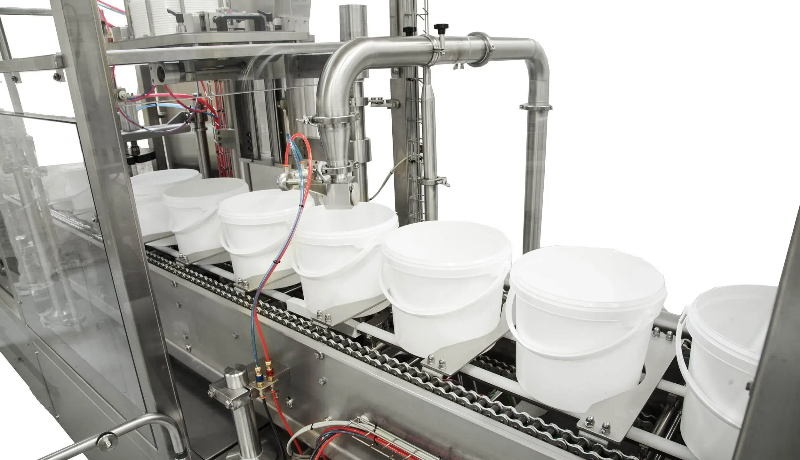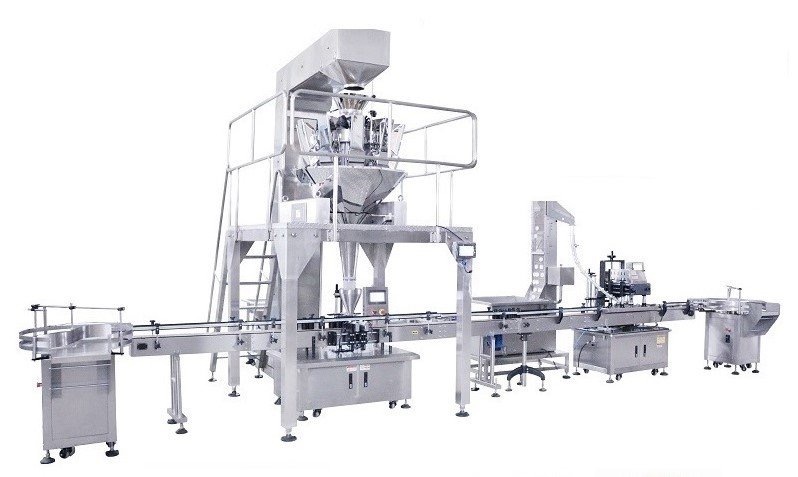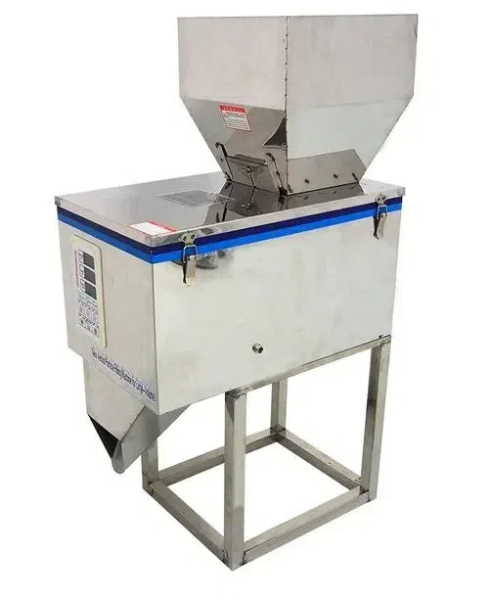
Content Menu
● Introduction
● The Importance of Dry Food Filling Machines in Modern Food Processing
● Types of Dry Food Filling Machines
>> 1. Volumetric Fillers
>> 2. Auger Fillers
>> 3. Gravity Fillers
>> 4. Net Weight Fillers
● Key Features of Modern Dry Food Filling Machines
>> 1. Precision Dosing Systems
>> 2. Quick Changeover Capabilities
>> 3. Integration with Bulk Material Handling Systems
>> 4. Smart Packaging Solutions
● Ensuring Food Safety in Dry Food Filling Operations
● Optimizing Packaging Line Efficiency with Dry Food Filling Machines
● The Future of Dry Food Filling Technology
● Conclusion
● Frequently Asked Questions
>> 1. What are the main advantages of using dry food filling machines?
>> 2. How do I choose the right type of dry food filling machine for my product?
>> 3. What maintenance is required for dry food filling machines?
>> 4. Can dry food filling machines handle different package sizes?
>> 5. How do dry food filling machines ensure food safety?
Introduction
In the ever-evolving world of food processing and packaging, dry food filling machines have emerged as a game-changing technology. These sophisticated pieces of equipment are transforming the way manufacturers package dry food products, from grains and powders to nuts and dried fruits. As the demand for efficient, precise, and hygienic packaging solutions continues to grow, understanding the intricacies of dry food filling machines becomes crucial for businesses looking to stay competitive in the market.
The Importance of Dry Food Filling Machines in Modern Food Processing
Dry food filling machines play a pivotal role in the food packaging industry, offering numerous benefits that contribute to improved productivity, product quality, and consumer satisfaction. These automated packaging systems are designed to handle a wide range of dry food products with utmost precision and efficiency.
One of the primary advantages of dry food filling machines is their ability to significantly increase packaging line efficiency. By automating the filling process, these machines can handle large volumes of products in a fraction of the time it would take for manual filling. This not only boosts production capacity but also reduces labor costs and minimizes the risk of human error.
Moreover, dry food filling machines are equipped with advanced powder filling technology that ensures accurate and consistent dosing of products. This precision is crucial for maintaining product quality and meeting regulatory requirements. Whether it's filling small sachets or large bags, these machines can be calibrated to dispense exact amounts of dry food products, eliminating over or underfilling issues that can lead to customer dissatisfaction or regulatory non-compliance.

Types of Dry Food Filling Machines
There are several types of dry food filling machines available in the market, each designed to cater to specific packaging needs and product characteristics. Understanding these different types can help businesses choose the most suitable equipment for their operations.
1. Volumetric Fillers
Volumetric fillers are among the most common types of dry food filling machines. These machines use a predetermined volume to measure and dispense products into packaging containers. They are ideal for free-flowing dry products such as grains, seeds, and certain powders. Volumetric fillers offer high-speed filling capabilities and can be easily adjusted to accommodate different package sizes.
2. Auger Fillers
Auger fillers, also known as screw fillers, are particularly effective for handling fine powders and granular products. These machines use a rotating auger to dispense products with high accuracy. Auger fillers are known for their ability to handle products that tend to bridge or clump, making them a popular choice for packaging spices, flour, and other similar dry food items.
3. Gravity Fillers
Gravity fillers rely on the force of gravity to dispense products into packaging containers. These machines are suitable for free-flowing dry products and offer a simple yet effective filling solution. Gravity fillers are often used in combination with other filling technologies to enhance efficiency and accuracy.
4. Net Weight Fillers
Net weight fillers use load cells or scales to measure the exact weight of the product being dispensed. These machines offer the highest level of accuracy and are ideal for applications where precise weight control is critical. Net weight fillers are commonly used for packaging high-value dry food products or when regulatory compliance requires exact weight measurements.
Key Features of Modern Dry Food Filling Machines
As technology continues to advance, dry food filling machines are becoming increasingly sophisticated, incorporating a range of features that enhance their performance and versatility.
1. Precision Dosing Systems
Modern dry food filling machines are equipped with advanced precision dosing systems that ensure accurate and consistent product dispensing. These systems often utilize a combination of sensors, load cells, and sophisticated software algorithms to achieve high levels of accuracy, even at high production speeds.
2. Quick Changeover Capabilities
Flexibility is a key requirement in today's dynamic packaging environment. Many dry food filling machines now offer quick changeover capabilities, allowing operators to switch between different product types or package sizes with minimal downtime. This feature is particularly valuable for manufacturers who produce a diverse range of products or frequently run small batches.
3. Integration with Bulk Material Handling Systems
To further streamline the packaging process, many dry food filling machines can be seamlessly integrated with bulk material handling systems. This integration ensures a continuous supply of product to the filling machine, reducing the need for manual intervention and minimizing the risk of product contamination.
4. Smart Packaging Solutions
The advent of Industry 4.0 has brought about a new era of smart packaging solutions. Modern dry food filling machines often come equipped with advanced sensors and connectivity features that allow for real-time monitoring of machine performance, predictive maintenance, and data-driven optimization of the filling process.

Ensuring Food Safety in Dry Food Filling Operations
Food safety is paramount in the food processing industry, and dry food filling machines play a crucial role in maintaining hygiene standards throughout the packaging process. Many modern machines are designed with food safety in mind, incorporating features such as:
1. Sanitary design principles that minimize areas where product can accumulate and facilitate easy cleaning
2. Use of food-grade materials in all product contact areas
3. Integration of clean-in-place (CIP) systems for thorough and efficient cleaning
4. Implementation of dust control measures to prevent cross-contamination and maintain a clean working environment
Additionally, many dry food filling machines are now equipped with advanced contamination detection systems, such as metal detectors or X-ray inspection units, to ensure that only safe, contaminant-free products reach the consumer.
Optimizing Packaging Line Efficiency with Dry Food Filling Machines
To maximize the benefits of dry food filling machines, it's essential to optimize the entire packaging line for efficiency. This involves careful consideration of factors such as:
1. Line layout and product flow
2. Integration with upstream and downstream equipment
3. Implementation of automated material handling systems
4. Utilization of packaging line management software for real-time monitoring and optimization
By taking a holistic approach to packaging line design and incorporating state-of-the-art dry food filling machines, manufacturers can achieve significant improvements in productivity, product quality, and overall operational efficiency.
The Future of Dry Food Filling Technology
As we look to the future, the field of dry food filling technology continues to evolve, driven by advancements in automation, artificial intelligence, and sustainable packaging solutions. Some emerging trends in this space include:
1. Development of more versatile machines capable of handling a wider range of products and packaging formats
2. Integration of machine learning algorithms for continuous process optimization
3. Increased focus on energy efficiency and sustainable packaging materials
4. Enhanced connectivity and data analytics capabilities for improved traceability and quality control
These advancements promise to further revolutionize the dry food packaging industry, offering even greater levels of efficiency, flexibility, and product quality.
Conclusion
Dry food filling machines have become an indispensable part of the modern food processing and packaging industry. By offering unparalleled precision, efficiency, and flexibility, these machines are helping manufacturers meet the growing demands of consumers and regulatory bodies alike. As technology continues to advance, we can expect to see even more innovative solutions in the field of dry food filling, further transforming the way we package and distribute food products around the world.

Frequently Asked Questions
1. What are the main advantages of using dry food filling machines?
Answer: The main advantages of using dry food filling machines include increased packaging line efficiency, improved accuracy in product dosing, reduced labor costs, minimized risk of contamination, and the ability to handle high production volumes with consistency.
2. How do I choose the right type of dry food filling machine for my product?
Answer: Choosing the right dry food filling machine depends on several factors, including the nature of your product (e.g., powder, granules, or flakes), desired production speed, accuracy requirements, and packaging format. It's best to consult with equipment manufacturers or packaging experts who can assess your specific needs and recommend the most suitable solution.
3. What maintenance is required for dry food filling machines?
Answer: Regular maintenance of dry food filling machines typically includes cleaning and sanitizing product contact surfaces, inspecting and replacing wear parts, calibrating dosing systems, and performing software updates. The specific maintenance requirements will vary depending on the machine type and usage intensity.
4. Can dry food filling machines handle different package sizes?
Answer: Yes, many modern dry food filling machines are designed with flexibility in mind and can handle a range of package sizes. Some machines offer quick changeover capabilities, allowing for easy switching between different package formats with minimal downtime.
5. How do dry food filling machines ensure food safety?
Answer: Dry food filling machines ensure food safety through various features, including sanitary design principles, use of food-grade materials, integration of cleaning systems, implementation of dust control measures, and incorporation of contamination detection systems like metal detectors or X-ray inspection units.












